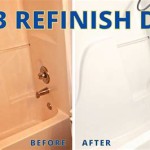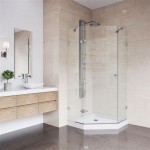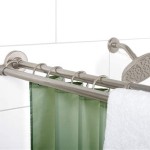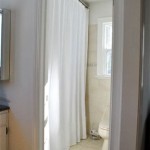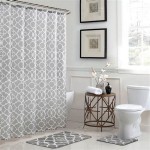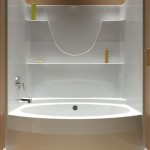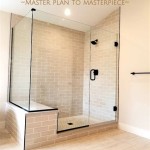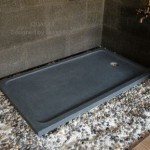The Ultimate Guide to Selecting the Best Backer Board for Wall and Bathroom Tiles
When it comes to tiling your home, the backer board is just as important as the quality of the wall and floor. A good backer board will provide proper support and create a stable surface for the new layer of the surface, which will help to increase the longevity of your tiling project. Not all backer are created equal; there are different types of backer board available, each with its own set of pros and cons. In this article, we will discuss the different types of backer board, their features, and how to choose the best backer board for your tiling project. ### What is a Backer Board? A backer is a sturdy material installed behind the tiling substrate, serving as a strong foundation for the application of wall and floor. It provides a smooth, even surface for laying the new layer of the surface, helps prevent the thin-set mortar from absorbing into the substrate and provides additional support, helping to prevent the new layer of the surface from cracking or becoming dislocated. ### Features of a Good Backer Board 1.Moisture resistance:
Backer board for bathrooms is required to be waterproof. It should be able to withstand constant exposure to water and humid conditions without warping, rotting, or deteriorating. 2.Strength and durability:
Backer board must be strong enough to support the weight of your new layer of the surface and any fixtures or appliances that may be installed on top. 3.Workability:
The backer board should be easy to cut, score, and install. 4.Cost-effectiveness:
The backer board should be priced competitively, but be cautious, as the least expensive options may not be the best value. ### List of different types of backer 1.Cement Backer Board:
This is the most common type of backer board. It is made of a mixture of portland material and reinforcing fibers, making it sturdy and water-resistant. Cement board is available in a variety of thicknesses, with 1/2-inch being the most common. It is a good choice for both wet and dry areas. 2.Moisture-Resistant Gypsum Wallboard (MRGB):
This type of backer board is made of gypsum plaster coated with a water-resistant facing. It is not as water-resistant as the concrete backer, so it is best to use it in dry areas. 3.Fivenuberboard:
This type of backer board is made of cellulose fibers and reinforced with a resin binder. It is water-resistant and has good soundproofing properties. However, it is not as strong as the concrete backer, so it is best to use it in low-traffic areas. ### How to select the best backer board for your tiling project? The best backer board for your tiling project requires knowledge of the materials that will be in constant contact with the surface, weather conditions, physical stress it will undergo, and building code requirements. 1.Type of new layer of the surface:
The type of new layer of the surface you are installing will decide the type of backer board you will need. For example, porcelain or high-end natural stone floor and wall require a backer board that is highly sturdy and water-resistant, such as a concrete backer board. Also, Bigger-format wall and floor require thicker backer. 2.Substrate type:
The sort of substrate your backer is being fixed to will also affect your choice of board. For instance, for an uneven or weak substrate, a backer board with a high degree of strength and rigidity may be required. 3.Moisture exposure:
For regions prone to continual wetness, humidity, or temperature extremes, a completely waterproof backer board is essential. Cement backer board and other waterproof backer are both suitable for use in wet locations, making them a good choice for bathrooms and showers. 4.Local building regulations:
When selecting the sort of backer board to employ, it is critical to consider local building rules, as specific rules may apply to the materials used for brand-new construction or remodeling projects. ### Usage Recommendations 1.For walls:
In general, a 1/2-inch backer board is sufficient for wall tiling. However, you may use a 5/8-inch backer board for extra strength and soundproofing. 2.For the floor:
For floor tiling, a 1/4-inch backer board is typically used. However, you may use a 1/2-inch backer board for extra strength, especially in areas with heavy traffic or where large format of floor are being installed. ### How to install a backer board? 1.Prepare the surface:
The first step is to prepare the surface by making it flat, smooth, and free of debris. You may need to level the surface using a self-leveling material. 2.Decide the layout:
Before installing the backer board, determine the layout of your new layer of the surface. This will help you to mark the backer board for cutting. 3.Mark and cut the backer board:
Use a sharp razor to score and cut the backer board to the size and shape. 4.Secure the backer board:
Install the backer board, securing it to the surface with screws or bolts. The screws or bolts should be spaced no more than 8 inches apart. 5.Grout the backer board:
Once the backer board is installed, you can start grouting between the surface of the backer board. ### FAQs 1.What is the difference between a backer board and a surface backer?
A backer board is installed behind the new layer of the surface, while a surface backer is used to smooth out the substrate prior to installing the backer board. 2.Is a backer board waterproof?
Not all backer are waterproof. Cement backer board is a waterproof backer board that is often used in wet areas, such as bathrooms and showers. 3.How thick should a backer board be?
The type of new layer of the surface and the substrate will determine the need of a backer board. For example, a 1/2-inch backer board is sufficient for wall tiling, while a 1/4-inch backer board is typically used for floor tiling. ### In conclusion Choosing the correct type of backer board is a vital step in any tiling project. By keeping the discussed points in mind, you can ensure that you pick the appropriate backer board for your requirements. With careful planning and proper installation, a backer board will provide a solid foundation for your tiling project.
The Pros And Cons Of Various Tile Backers Family Handyman

Tile Backerboard Material Options Fine Homebuilding

The Pros And Cons Of Various Tile Backers Family Handyman

What Is The Best Backer Board For A Shower

How To Install Cement Board For Tile Projects Diy Family Handyman

What Is The Best Backer Board For A Shower

Choosing Installing A Tile Backer Board Checkatrade

6mm No More Ply Tile Backer Board

What Is Tile Backer Board Used For Sieme Ltd

What Lies Beneath Tsj
Related Posts

